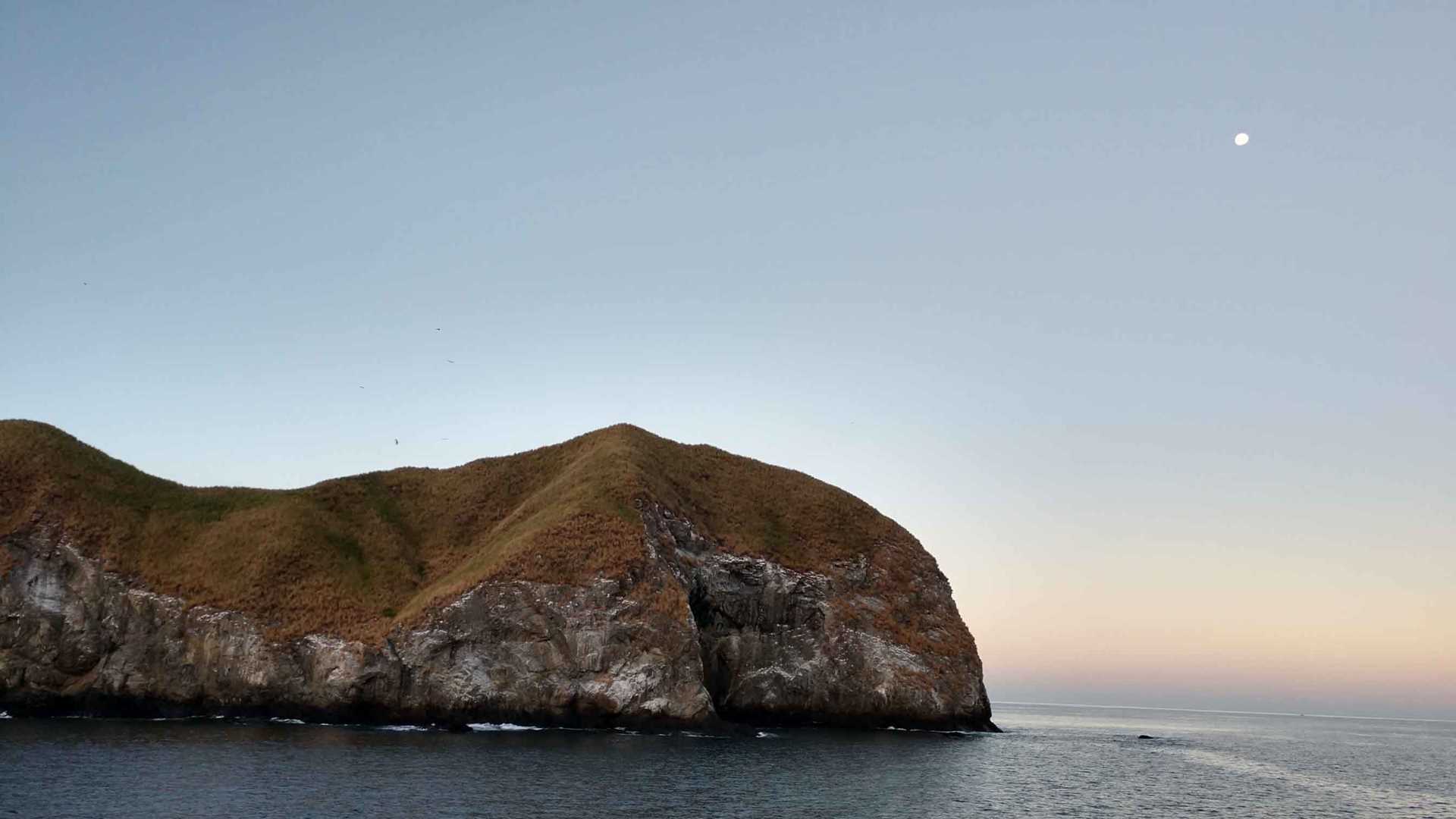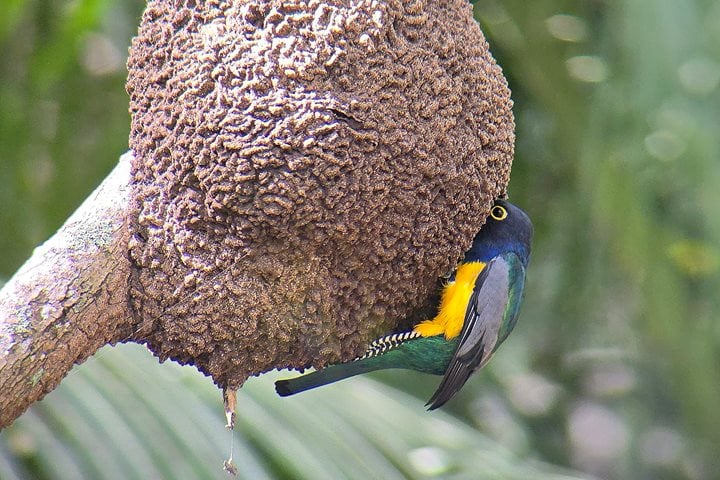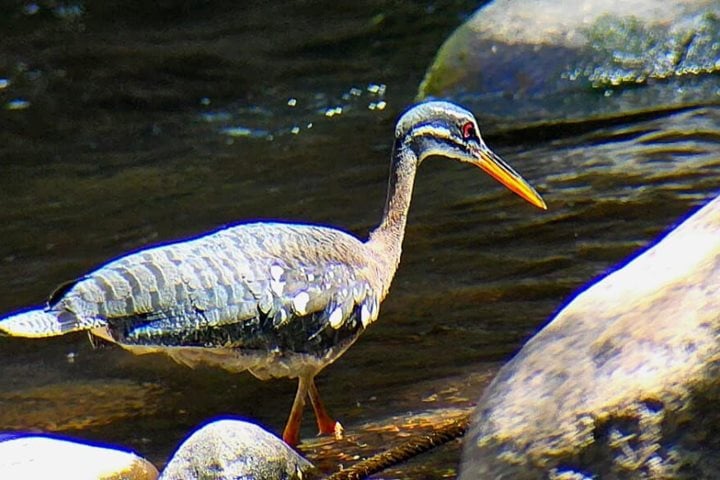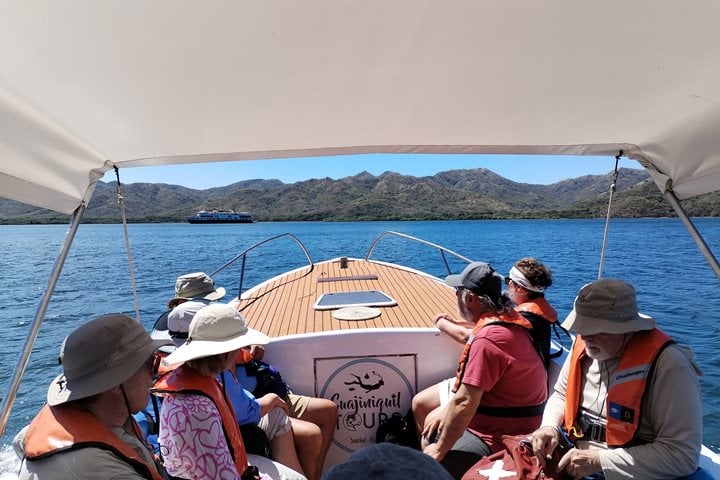One of the remarkable aspects of Costa Rica is the numerous amounts of secluded locations in the country. Guanacaste is comprised of coastal zones developed for the travel industry, while also a large number of locales left unrevealed for the average traveler. Finding Punta Zapotal has been one of the most treasured locations that a Lindblad-National Geographic program in Costa Rica have ever accomplish.
As we neared our point of anchorage in Punta Zapotal, third mate Pataky and Captain Davis decided to give us a terrific entrée to the eye this morning, bringing us in view of the Catalina Islands. For the first time in our ship’s history, we were witnessing from the bow Catalina’s flora and fauna. Magnificent frigate birds and brown boobies flew over the islands as the moon set off the horizon. Fantastico!
Guests had a choice between a mid-morning snorkel at Brummel Islets or kayaking at Zapotal Beach. On the other hand, a good number of our guests decided to walk the remote access road to Zapotal beach. Black-headed trogons, rufous-naped wrens, white-throated magpie-jays, among others added to our life list as we walked the mixed flat terrain of pastureland and deciduous forest trees.
For the afternoon, our program is taking us to the beach town of Tamarindo, a vivid space where a mix of nationalities converge to create a community in which one finds a host of different amenities and services. While some guests went about the beach town’s proper, others visited Tamarindo’s mangroves.
Tamarindo’s estuary is a large wetland (700 square hectares in size) protected and designated as a Ramsar site where the local community and Costa Rica in general must protect. Mangroves are recognized to be an efficient habitat that, aside from their role as natural buffer zone between land and marine ecosystems, are a huge contributor in carbon sequestration.







